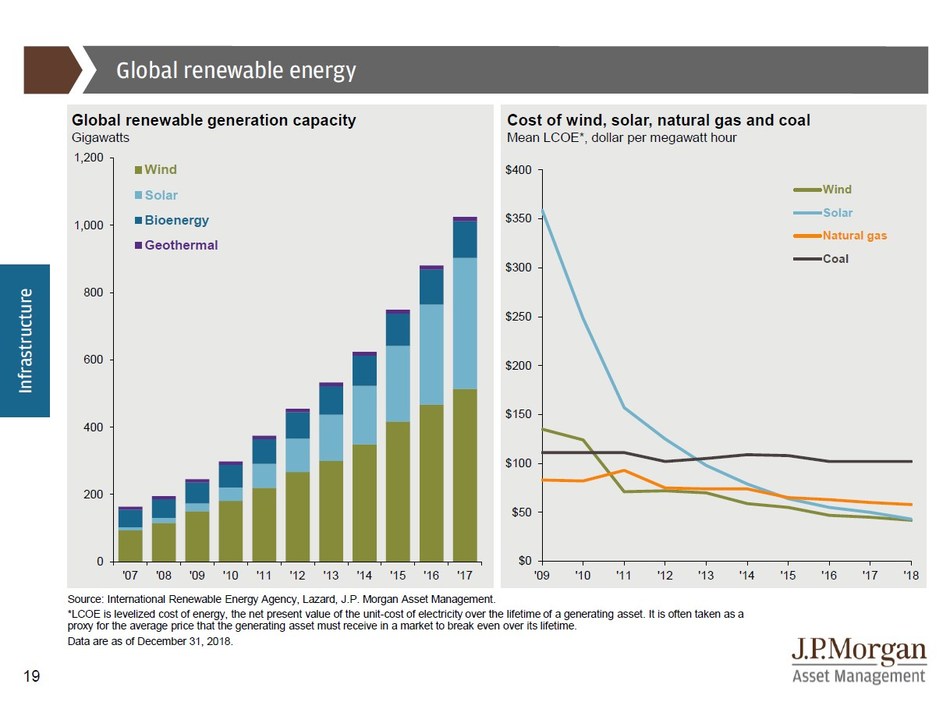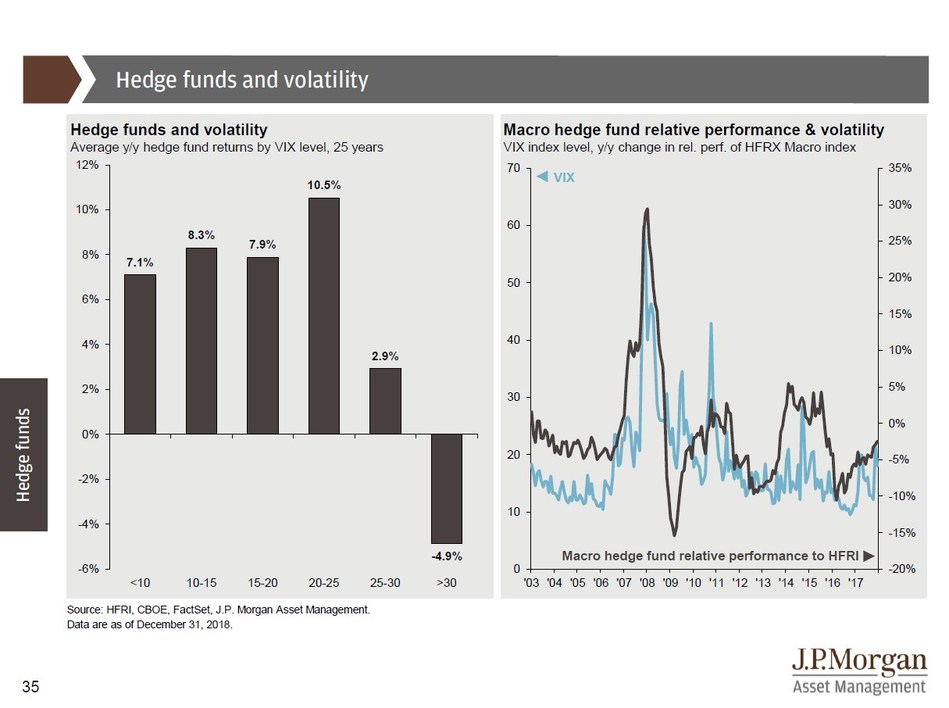
Quarterly Guide Delivers Analysis of Key Trends Across Alternative Asset Classes
NEW YORK: J.P. Morgan Asset Management today announced the addition of a new publication to its Market Insights Program, the Guide to Alternatives. Much like its sister publication, the Guide to the Markets, the Guide to Alternatives is designed to provide an objective analysis of the key themes impacting alternative asset classes. The book delivers insight on macro topics such as fundraising and manager dispersion, while also diving into real estate, infrastructure & transport, private credit, private equity and hedge funds in detail.
“With expected returns from traditional asset classes under pressure, investors have been forced to look elsewhere in an effort to reduce volatility and enhance returns. In response to this, we have developed the Guide to Alternatives to provide unbiased and objective insights on what has historically been a relatively opaque asset class,” said David Kelly, Chief Global Strategist, J.P. Morgan Asset Management. “Volatility should rise as the business cycle matures, and investors will continue to embrace alternatives. However, access to information will be the key to making optimal investment decisions.”
“Historically, many investors have lacked any sort of structure when it comes to alternative asset allocation decisions. With markets decidedly late-cycle, having both a framework and process for evaluating and implementing alternative asset classes in portfolios will become increasingly important,” said David Lebovitz, Global Market Strategist, J.P. Morgan Asset Management. “This new resource should not only provide an access point for information on alternatives, but also foster discussion among both institutional investors and financial advisors on risks and opportunities in an increasingly challenging market environment.”
Among the prominent themes in the 1Q19 Guide to Alternatives:
1. Striking the right alternative asset allocation balance
Investors have recognized that a sizable allocation to alternatives can give a needed boost to portfolios. Too often, however, investors assemble a collection of independently-chosen alternative assets, not giving enough thought to how these investments will work together in a portfolio.
“We believe in looking at the alternatives portfolio holistically – having a carefully constructed framework for an alternatives portfolio is essential for success,” said David Lebovitz, Global Market Strategist, J.P. Morgan Asset Management.
J.P Morgan Asset Management suggests that an alternative asset portfolio be comprised of three basic components:
- Core foundations, with assets such as core real assets and core private credit providing the potential for stable income with lower volatility
- Core complements, with assets such as hedge funds able to benefit from increased volatility
- Return enhancers, with assets such as distressed credit and private equity seeking opportunistic returns.
Across alternative asset classes, investors can uncover a wide range of market opportunities and late-cycle risks, such as dry powder in private equity and the evolving structure of private credit markets.
2. ESG integration is now mainstream in infrastructure investing
Private infrastructure investing has reached a tipping point, as the integration of environmental, social and governance (ESG) standards has become mainstream.
Infrastructure investing has led other asset classes in mitigating climate change risks and bolstering resilience; this has been driven in part by the need to comply with environmental regulations – a fundamental threshold for achieving expected returns.
Some examples of where this has been witnessed across J.P Morgan’s portfolios are water companies complying with water conservation goals, renewable energy providers documenting emissions avoided, and the adoption, testing and revision of disaster resilience plans.
J.P. Morgan Asset Management sees increased opportunity in the renewable energy space as generation capacity increases and the cost of producing solar and wind energy continues to decline.
3. Hedge funds can play a key role in volatile markets
Often times, conversations about late-cycle investing focus on ways of playing defense in choppy markets. However, hedge funds can allow investors to play offense also as higher volatility takes hold towards the end of the cycle.
That said, certain types of hedge fund strategies stand out. Long/short equity funds should benefit from higher short-term yields and greater price dispersion, while macro and quantitative strategies, which often times focus on uncovering short-term inefficiencies, should benefit from higher volatility. These qualities may prove advantageous in the coming year, as correlations continue to fall and price dispersion continues to rise.
To view the full 2019 Guide to Alternatives, click here.
About J.P. Morgan Global Alternatives
J.P. Morgan Global Alternatives is the alternative investment arm of J.P. Morgan Asset Management. With more than $135 billion in assets under management and over 800 professionals (as of September 30, 2018), we offer strategies across the alternative investment spectrum including real estate, private equity and credit, infrastructure, transportation, liquid alternatives, and hedge funds. Operating from 23 offices throughout the Americas, Europe and Asia Pacific, our independent alternative investment engines combine specialist knowledge and singular focus with the global reach, vast resources and powerful infrastructure of J.P. Morgan to help meet each client’s specific objectives. For more information: www.jpmorganassetmanagement.com.
About J.P. Morgan Asset Management
J.P. Morgan Asset Management, with assets under management of $1.7 trillion (as of December 31, 2018), is a global leader in investment management. J.P. Morgan Asset Management’s clients include institutions, retail investors and high net worth individuals in every major market throughout the world. J.P. Morgan Asset Management offers global investment management in equities, fixed income, real estate, hedge funds, private equity and liquidity. J.P. Morgan Asset Management is the marketing name for the asset management businesses of JPMorgan Chase & Co. (NYSE: JPM), and its affiliates worldwide.
Any forecasts, opinions, statements of financial market trends or investment techniques and strategies expressed are those of J.P. Morgan Asset Management, unless otherwise stated, as of the date of the release. They are considered to be reliable at the time of this release, and may be subject to change without notice. Investing in Alternatives investments involves risks.
J.P. Morgan Asset Management is the marketing name for the asset management businesses of JPMorgan Chase & Co. Those businesses include, but are not limited to, J.P. Morgan Investment Management Inc., Security Capital Research & Management Incorporated, J.P. Morgan Alternative Asset Management, Inc., and J.P. Morgan Asset Management (Canada), Inc.
J.P. Morgan Institutional Investments, Inc., members of FINRA
Copyright 2019 JPMorgan Chase & Co. All rights reserved.















